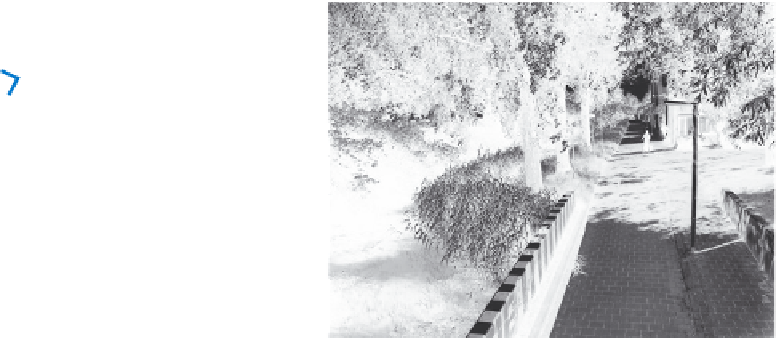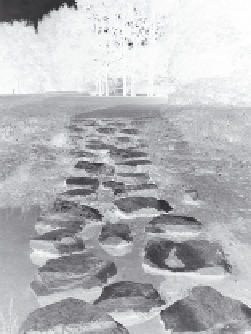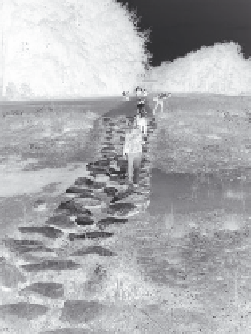Agriculture Reference
In-Depth Information
for informal park uses. A rock
trail, seen in Figures 14.29-A and
B, provides passage across the
swale during low-water events and
connects to a paved walking trail
on the higher ground. A narrower
and deeper swale could have been
constructed, providing for a sim-
ilar flood capacity, but that would
limit the use of the area for recre-
ation, at the same time creating
a physical and visual barrier that
would unnecessarily divide the
park. A bridge would be required
for passage across the deeper and
narrower swale, potentially a more
costly solution. In cases where open space is limited, the narrower swale
would be an appropriate solution. An example of the bridge and swale
solution is shown in Figure 14.30. Figure 14.31 provides an example where
a bridge (A) solution was designed over a narrow and deep canal (B) to
accommodate a tight space. The bridge in this example is a less visually
integrated approach, but with straightforward functional advantages.
C
C
B
B
A
A
B
Figure 14.29-a
Stepping stone
trail traversing drainage retention
swale, Rotterdam's Sud Park
Figure 14.29-B
Stepping stone
trail traversing drainage reten-
tion swale connecting to upper
asphalt paved walkway, Rotter-
dam's Sud Park
B
A
Figure 14.30
Manzanaras Park, Madrid, designed by West 8
landscape architects
West 8 lAndsCApe ArChiteCts, MAdrid, spAin
Figure 14.31
Pedestrian bridge over canal solution, Delft,
the Netherlands
















